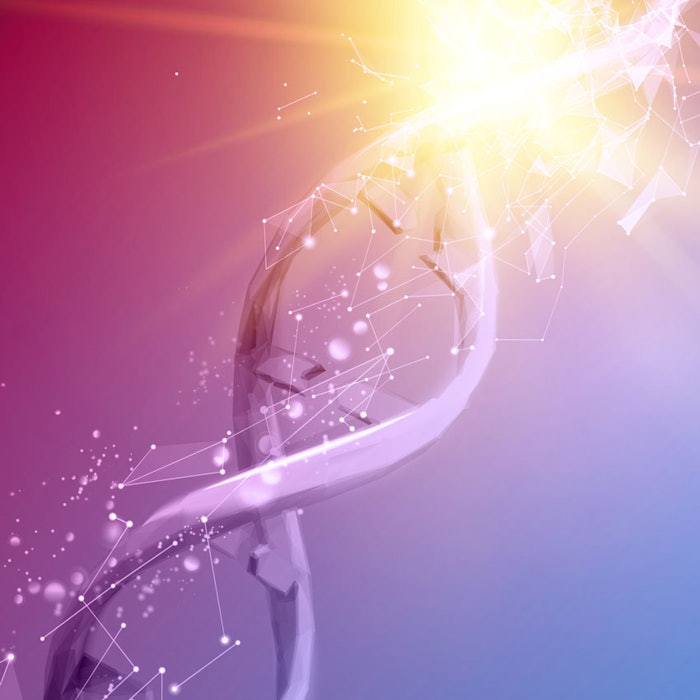
Researchers from Binghamton University and the University of Rhode Island are leveraging DNA's self-assembling behavior for applications with potential in personal care. As their recent article, published in Scientific Reports, explains, UV irradiation causes two types of DNA lesions: cyclobutane pyrimidine dimers and 6–4 photoproducts. Both types distort the molecular structure of DNA, introducing bends and kinks that impede transcription and replication.
Incidentally, thin and transparent films of dried and crystallized DNA formed through this self-assembling behavior increased in optical density when exposed to non-ionizing UV light. This reduced the transmittance of incident UVC and UVB light by up to 90% and UVA by up to 20%. In addition, these DNA films were highly absorbent and hygroscopic; when applied to skin, they slowed water evaporation and maintained hydration for extended periods.
According to the authors, beyond health care, other advances have been made for exploiting DNA self-assembly to create a diverse range of three-dimensional architectures for applications in physics, biology and chemistry; and novel electrical, optical and biosensing properties. Related work also has shown this increase in optical density of the material can be induced by denaturing DNA molecules with heat, pH, ionizing radiation and high salt mediums, opening the door to innovation in several personal care product categories.










